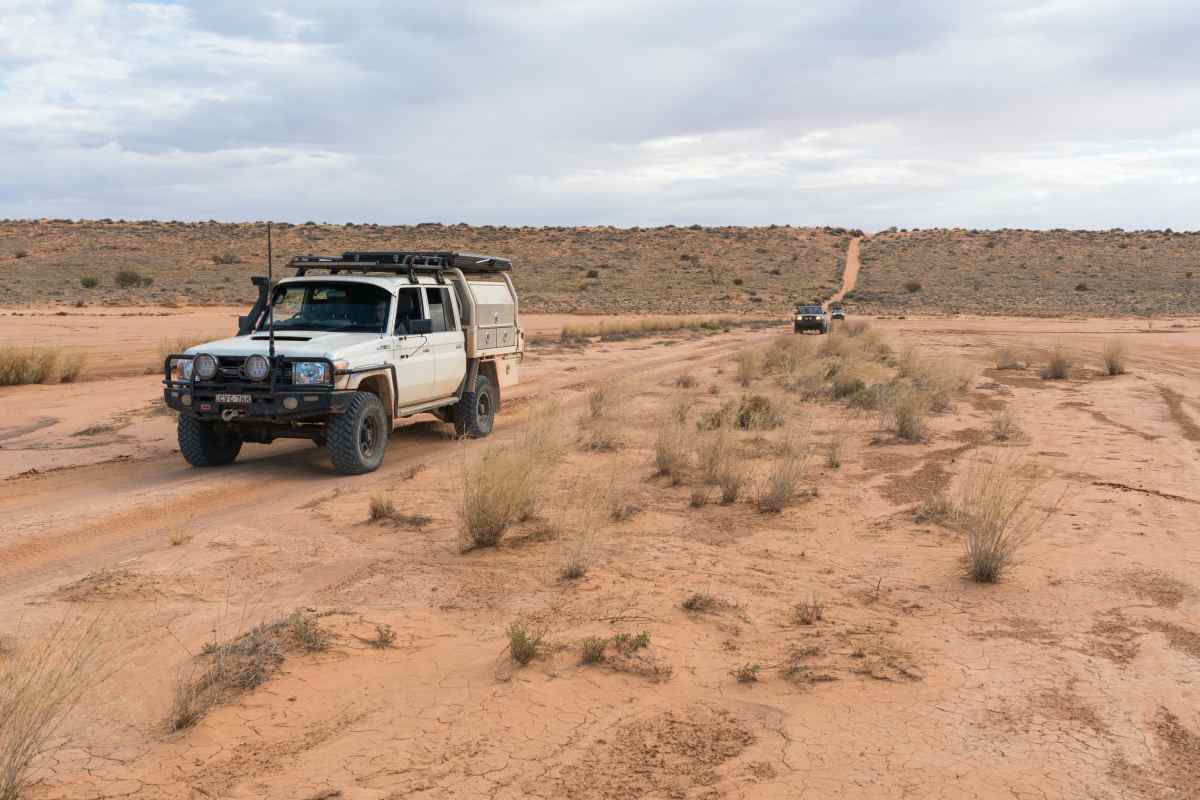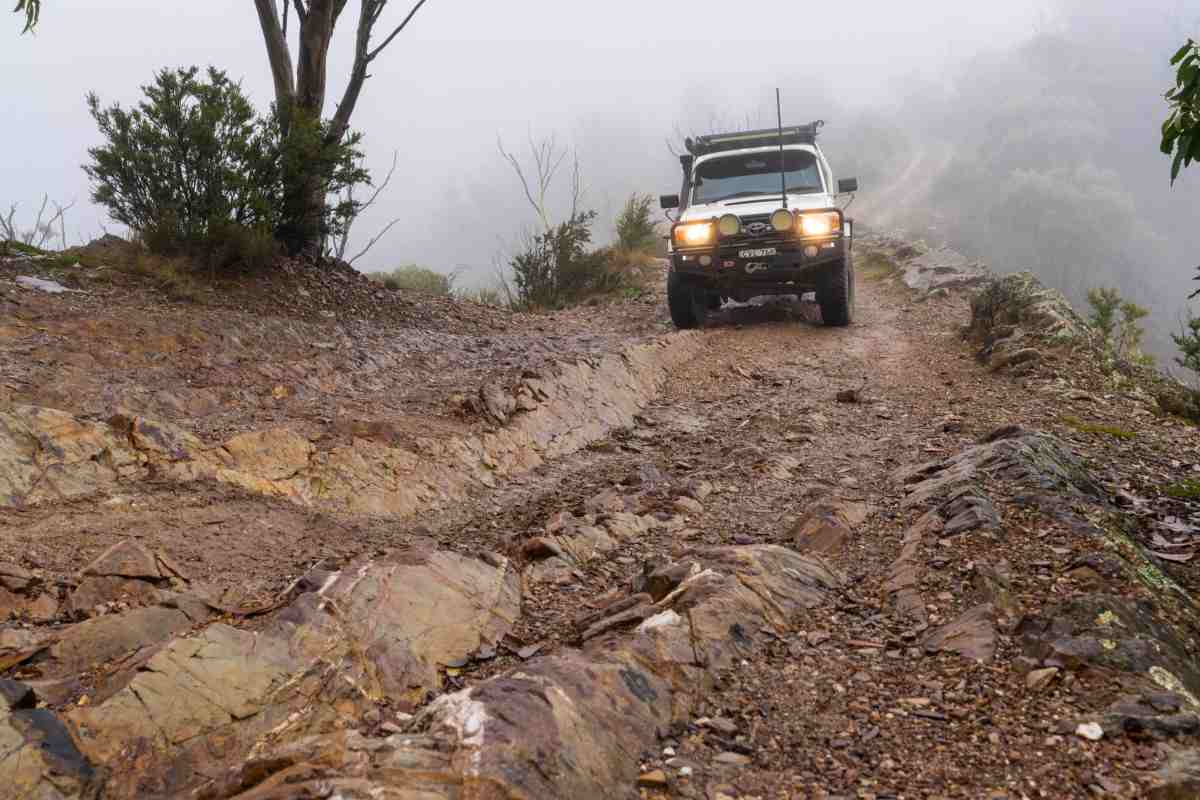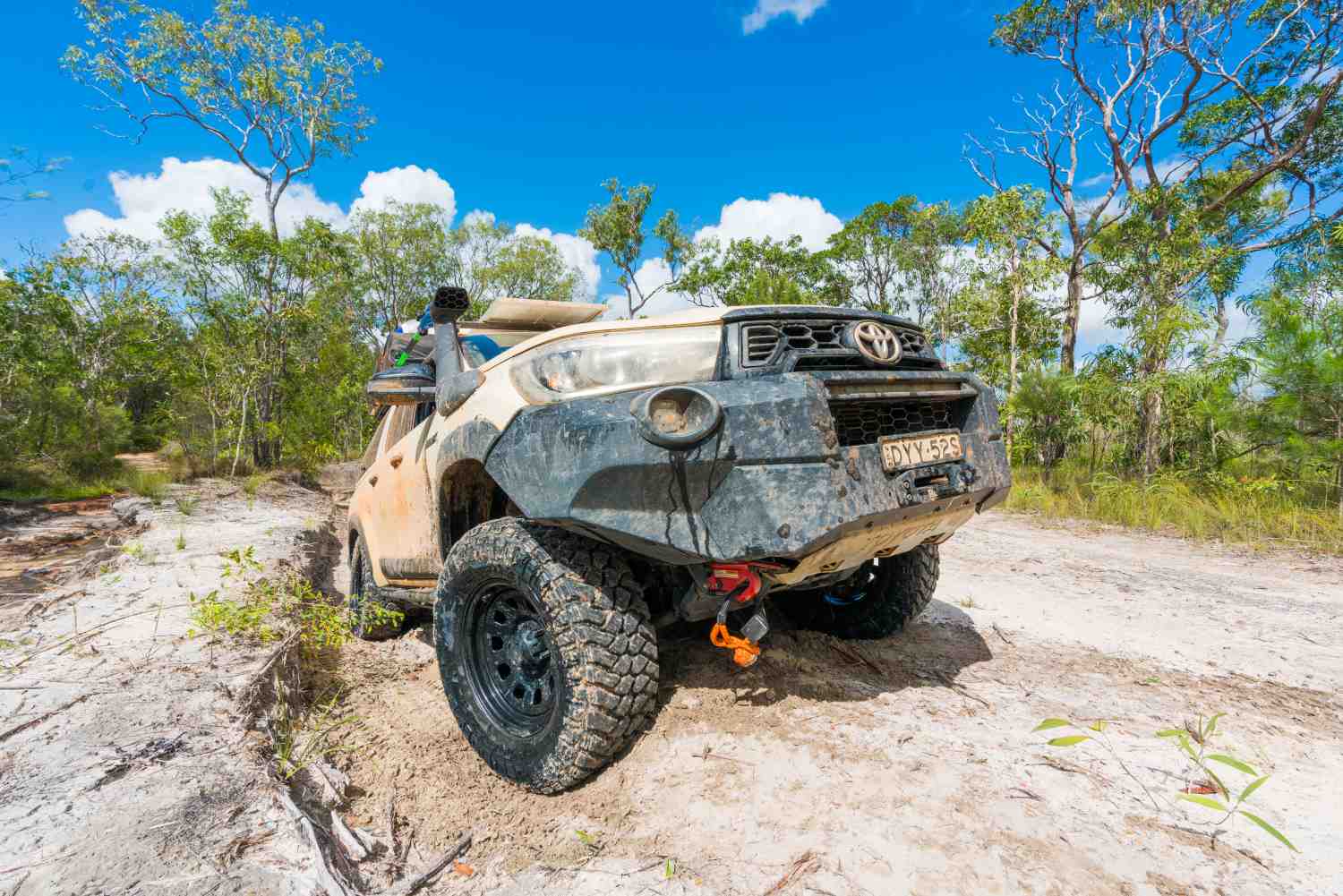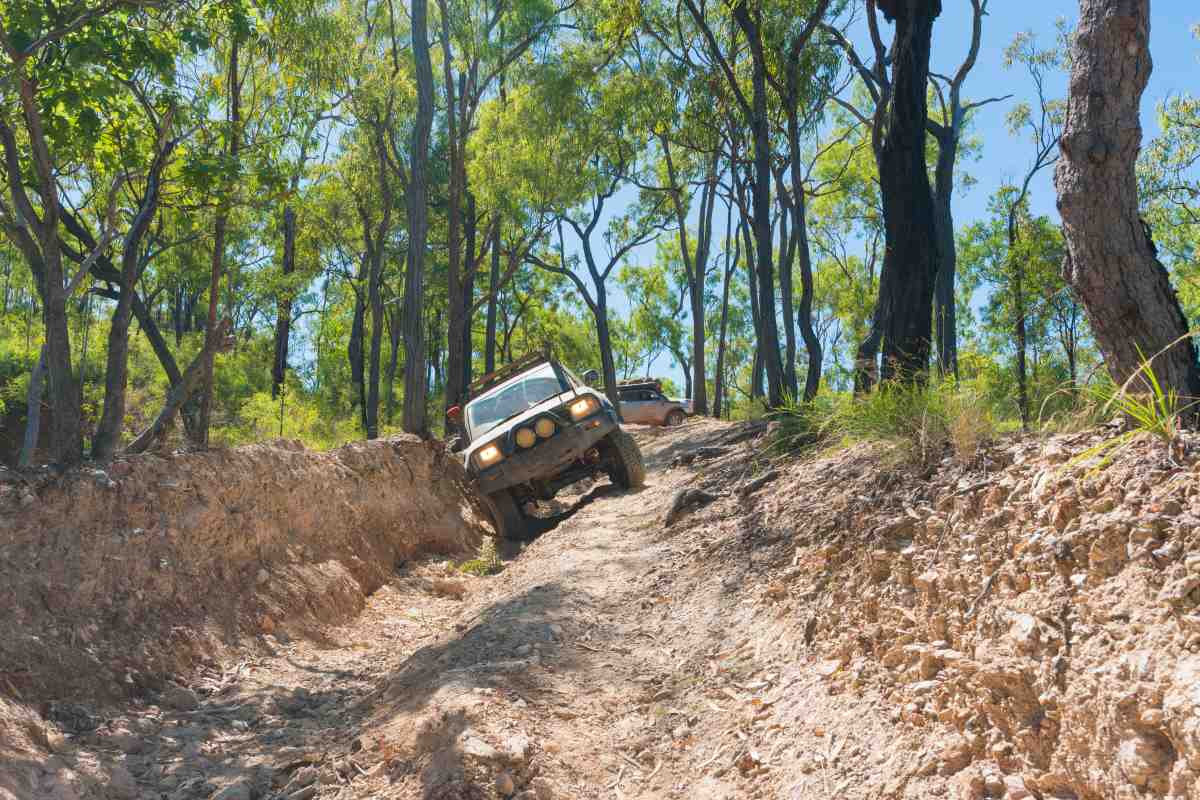Advertisement
Advertisement
Have you ever been sitting around the campfire with some more experienced 4×4 mates and found you only understand about half of what’s being said? You wouldn’t be alone there. Four-wheel drivers do have a language of their own, and understanding it can require a steep learning curve. So we’re here to unclutter all the acronyms, abbreviations and those oft-used phrases that can be super confusing for all but the most experienced. If you’re ready to follow along with those campfire conversations, then read on. With that, let’s get into it, the ultimate 4×4 glossary – a beginner’s guide to 4WD talk.

As the name suggests, a 4WD is a vehicle where engine power is potentially sent to all four wheels. There are multiple different versions of this, from full-time, part-time and all-wheel-drive.
Like the old 80-series Land Cruisers, these have drive to both front and rear axles at all times, with a centre differential that allows the axles to turn at different speeds. Locking that centre differential ‘locks’ the two axles together.
Like most modern 4x4s, they run around with drive to one axle only, most of the time with the ability to engage the remaining axle on demand.
Similar to full-time 4×4, drive goes to the front and rear axles. However, often the split of power is not even.
Also referred to as the 4×4 gearbox, it’s the secondary box responsible for sending power to the second axle on a 4×4 and includes the low-range gearing. All wheel drive vehicles typically lack a transfer case.
Engine power is being sent through the gearbox’s ‘normal’ drive ratios. This is effectively the same as every ‘normal’ car.
Engine power is sent through the transfer case’s lower drive ratios, which means higher engine speed for lower wheel speed.
This occurs when in four-wheel drive with the centre diff locked and the vehicle is driven on high-traction surfaces (i.e. paved roads). Where the axles spin at different speeds on the road, the transmission bears the brunt of the difference, and the gears become bound up. It can be catastrophic for the transmission.
Also known as the diff, it is basically a mini gearbox (diff pumpkin) that accepts power from the gearbox or transfer case and sends power through the axle to the wheels. The design of a diff allows the wheels on each axle to turn at different speeds (so the vehicle can turn corners). The downside of this is that power is sent to the wheel with the least resistance (the one with the least traction).
To overcome the above issue, we have lockers. These are a mechanism within the diff that engage to lock the axle so both wheels turn at the same speed. Various options exist to engage this mechanism, from air actuated to electromagnet.
a mechanical mechanism that acts like an automatic diff lock when wheel spin is detected. Some vehicles include these from factory, but aftermarket options exist, such as auto locker.
The hub is the section of the axle that the wheel bolts onto. Most modern-day vehicles will have full-time locked hubs, which means that when the wheels on the non-driven axle turn, so do the axles. Manually locking or free-wheeling hubs enable the wheels (hubs) to be disconnected from the axles, so effectively, the non-driven axle acts like a trailer, and the wheels spin independently of the motor and gearbox.
Also called brake traction control, detects uneven wheel speed (i.e. one wheel spinning) and applies the brakes to the slipping wheel, allowing drive to be directed to the wheels with the most grip. This can sometimes be a pain on really loose surfaces such as sand, where a little wheel spin is needed.
Not to be confused with traction control, it’s the vehicle braking independent wheels because it senses a loss of control. Can also be a pain on slippery/loose surfaces.
a suspension system with four control arms that link the axle to the chassis. Also comes in three-link and five-link.
Suspension springs shaped like a coil that control ride height, wheel travel and control bumps in the road. Coil contract as load (weight) is applied and expands as load is reduced.
Does the same job as the above but using a series of ‘leaves’ stacked on one another. Leaves are essentially long, curved sections of flat steel that tend towards flattening when load is applied.
Shock absorbers or dampeners. Typically, tubed suspension components that counteract the movement of springs. Without these, the springs would bounce up and down uncontrolled.
Independent Front Suspension is a system where each side of the diff is bolted to the chassis separately and moves independently of the other. Independent Rear Suspension is the same idea on the rear axle.
A system where the wheels and diff are connected through a single, straight unit.
When the springs and shocks are replaced, they raise the ride height of a 4×4. Typically includes taller/stiffer springs and longer shocks as a minimum. Can include just about everything under the vehicle for crazy lift heights.

As it suggests, this is as simple as where your wheels (tyres) are going to be touching ground.
This is an extension of the above and basically means selecting a series of wheel placements to create a path through an obstacle.
Place your wheels on either side of a rut or obstacle so that the centre of the vehicle passes over without the wheels touching or entering the rut or obstacle.
The up and down movement of each wheel. Typically, we refer to the maximum wheel travel allowable by the vehicle suspension.
An extension of the above that refers to the travel of more than one wheel and often the way one wheel moves up into the wheel arch, as the other moves away from the wheel arch. Solid axle 4×4’s typically have more capability and do this better than IFS/IRS 4×4’s.
Imagine a line drawn from the bottom of the front tyre up towards the lowest part of the front bumper/bull bar. The angle between this line and the flat ground is the approach angle.
As above, but from the rear wheel to the rear bumper.
Draw lines backwards from the bottom of the front tyres and forwards from the rear tyres to the lowest point, in the middle, on the underside of the vehicle.
Underbody clearance is often misquoted by manufacturers, but basically, it is the difference in height between the lowest point under the vehicle and the ground.
The recommended depth of water a 4×4 can drive through. Note that snorkels do not change this; they simply add a layer of insurance to the air intake.
Drive like a talentless hack as fast as you can.
Reducing the tyre pressures to provide more traction/flotation off-road.
A method where the vehicle is started in gear, typically used for reversing down steep hills.

Same idea as that trip to the great barrier reef but for a 4×4 not your mouth. Designed to raise the level of the air intake and prevent water ingress.
A bar mounted to the front of the vehicle to protect from animal strikes and provide an excellent spot for mounting accessories. Most commonly made of steel, but also comes in lighter alloy and plastic options.
Most commonly an electric winch mounted to the bull bar, with a long rope designed to get you out of the poop. Low mount (the most common variety) winches are typically hidden away inside the bull bar and do the job, although a little slow. High mount winches take up more space than low mount (which is why you will often see them mounted on the bull bar rather than inside it), but are significantly quicker and more powerful. Also comes in manual versions (hand winch) that are portable and can be used to pull a vehicle backwards, but do require significantly more effort than electric versions.
A type of pulley designed to redirect or double up rope in a recovery situation. Modern-day recovery rings are quickly replacing these.
When the winch rope is extended out to a recovery block that is secured to a tree or similar, and then extended back to the vehicle.
A recovery strap designed to stretch and allow kinetic energy to be transferred from a recovery vehicle to a stuck vehicle. Modern-day alternatives are called kinetic ropes and do the same job even better.
Designed to be used when winching to extend the reach of the winch rope. These do not stretch.
A non-stretchable strap designed to be wrapped around trees and connected to winch ropes. Use this to stop the winch rope from cutting into and killing the tree. These are also handy to use as an equaliser strap connected to two recovery points on the front of a 4×4. This is a great idea for all front recoveries to spread the load across two points rather than one.
A link used to join two things in a recovery (i.e. strap to a recovery point). Old school designs (bow shackles) are heavy steel, but modern-day soft shackles are basically a piece of winch rope that does the same job with far less risk of becoming a deadly projectile.
A recovery board is kinda like a plank of wood with grip studs bolted onto it, but much more fancy. Fantastic devices for assisting in recovery or vehicles bogged in soft or slippery stuff.
Mud terrain tyres are typically designed for more than 70% off-road driving. Usually include bigger gaps between the tread blocks, designed to clear mud and achieve better traction when the going gets tough.
All-terrain tyres are typically designed for an even split of off-road and on-road use.
These are tyres stamped with a ‘Light Truck’ designation. This typically means stronger side walls and better load-carrying ability for heavy 4x4s.

Someone who acts as a pair of eyes and helps guide a 4×4 from outside the vehicle.
The person that always organises stuff and deserves a beer from you.
The person at the back of the convoy who most closely resembles a US Marine and is responsible for ensuring that no man is left behind.